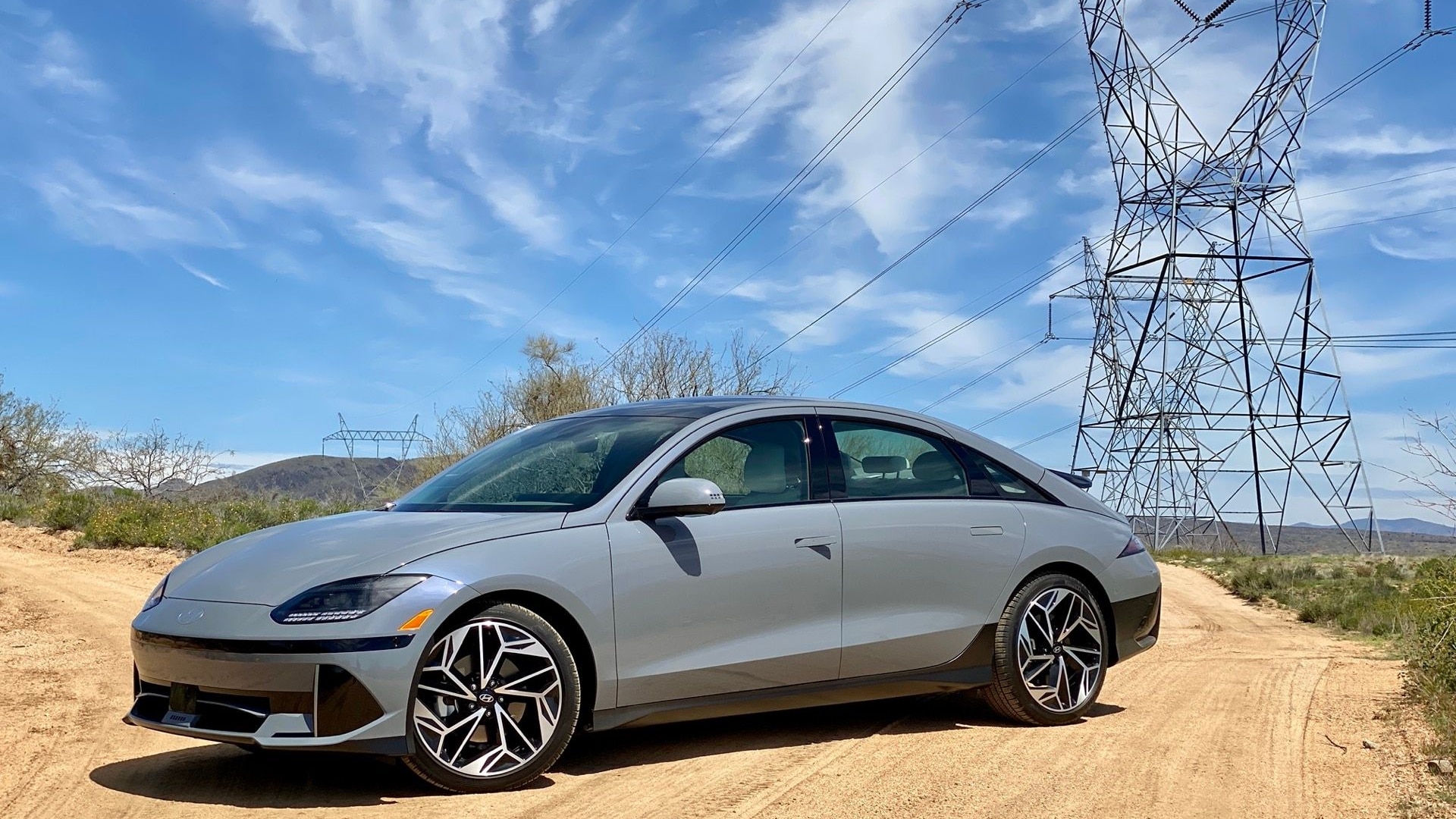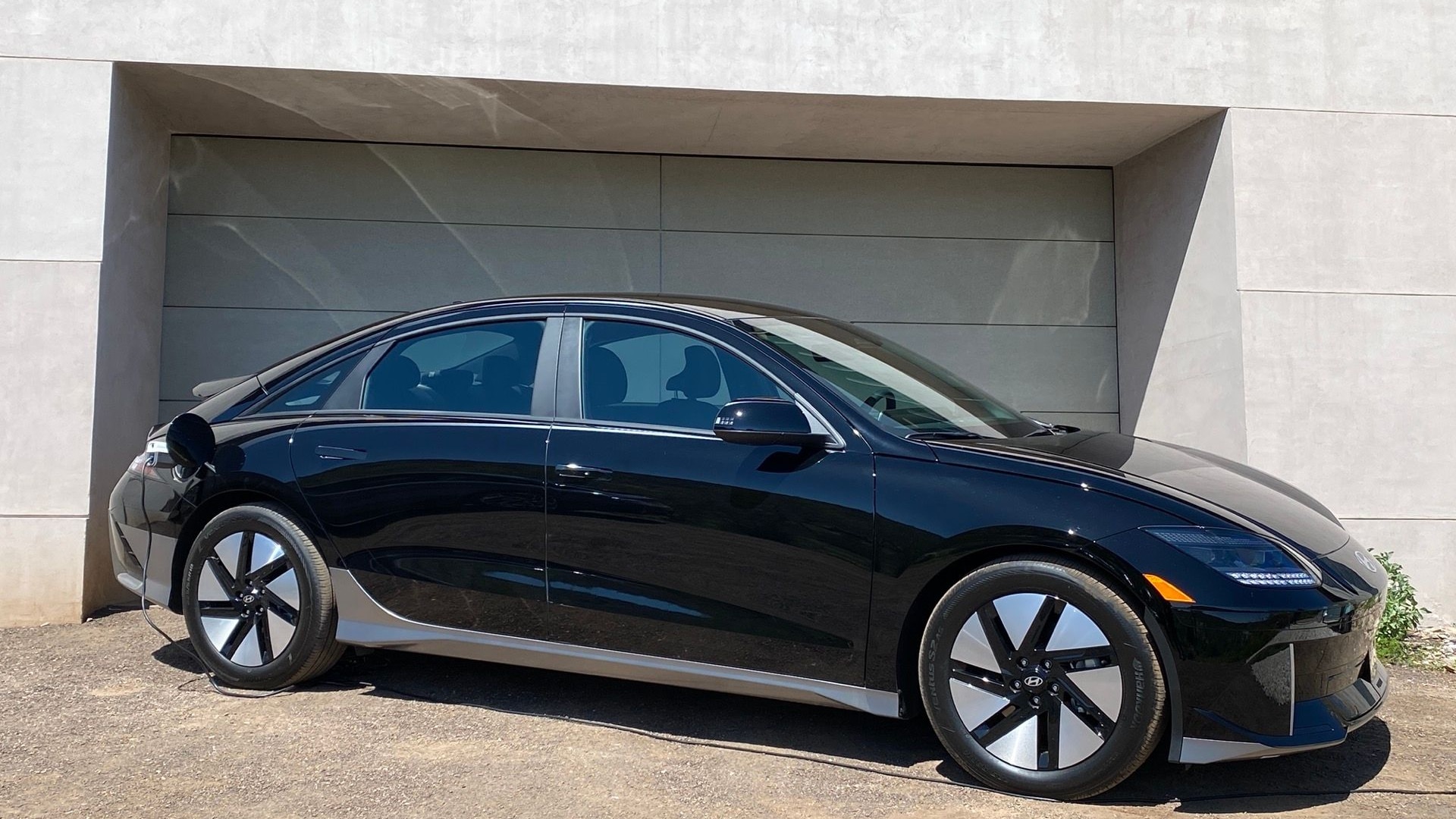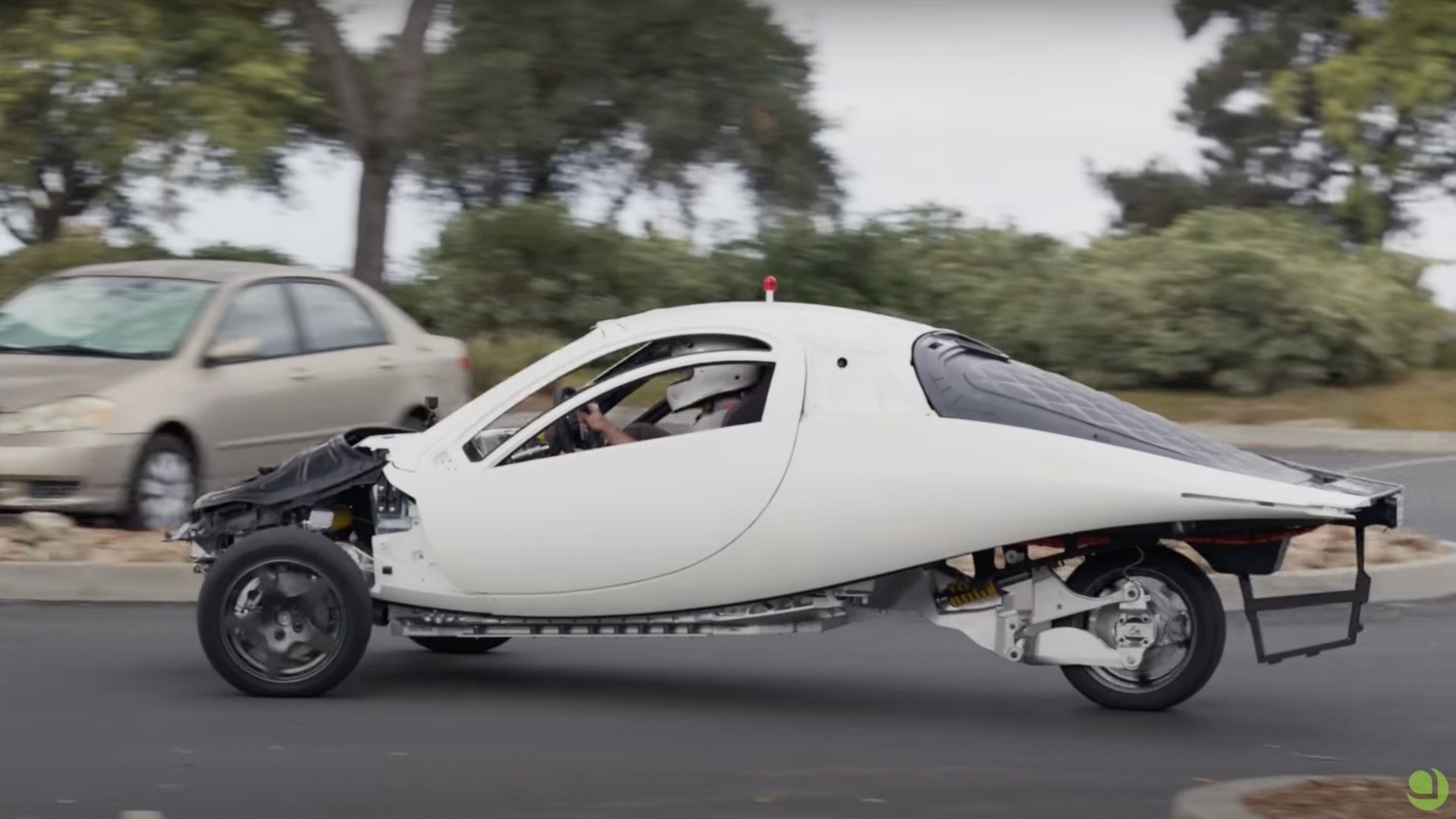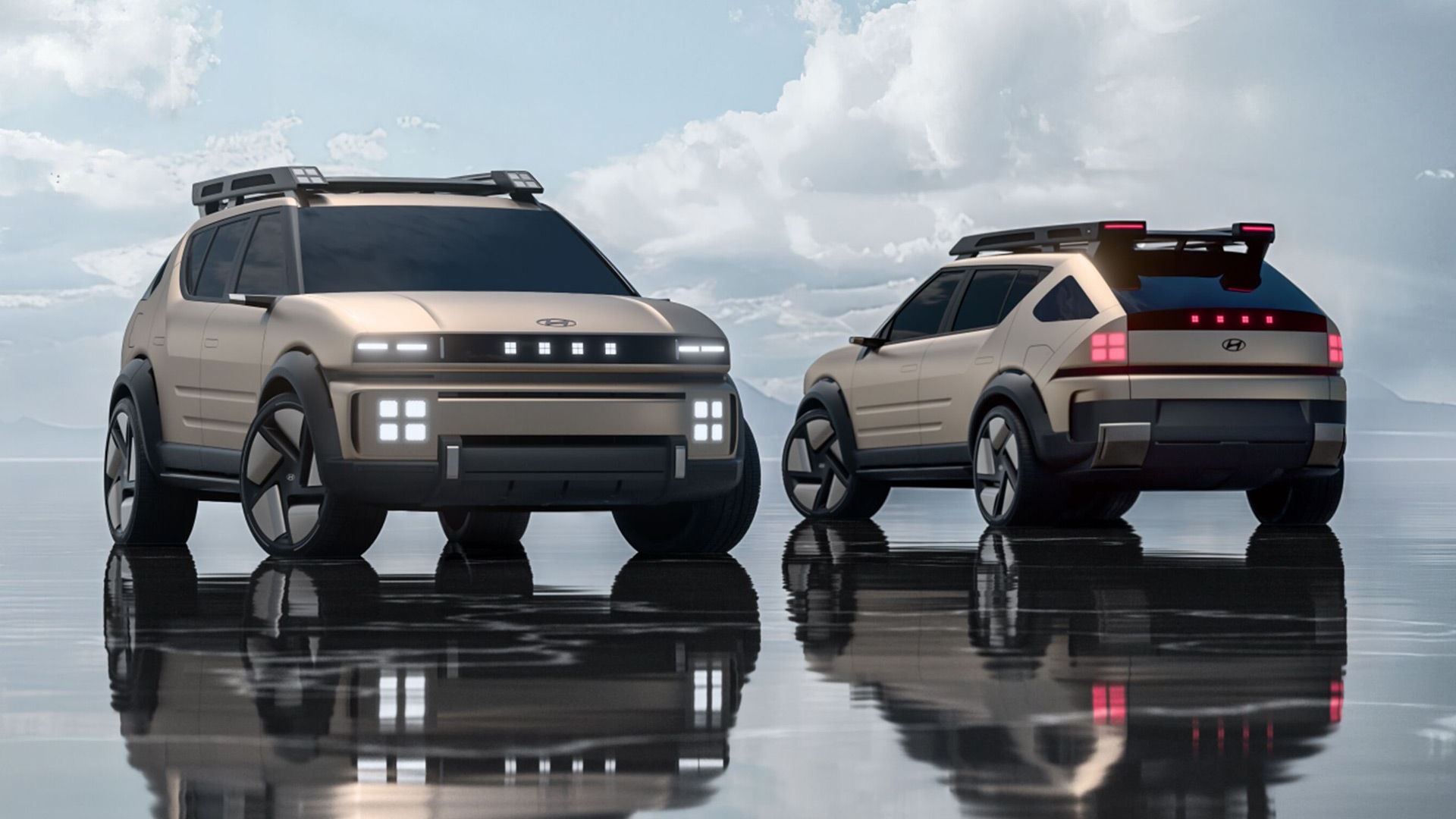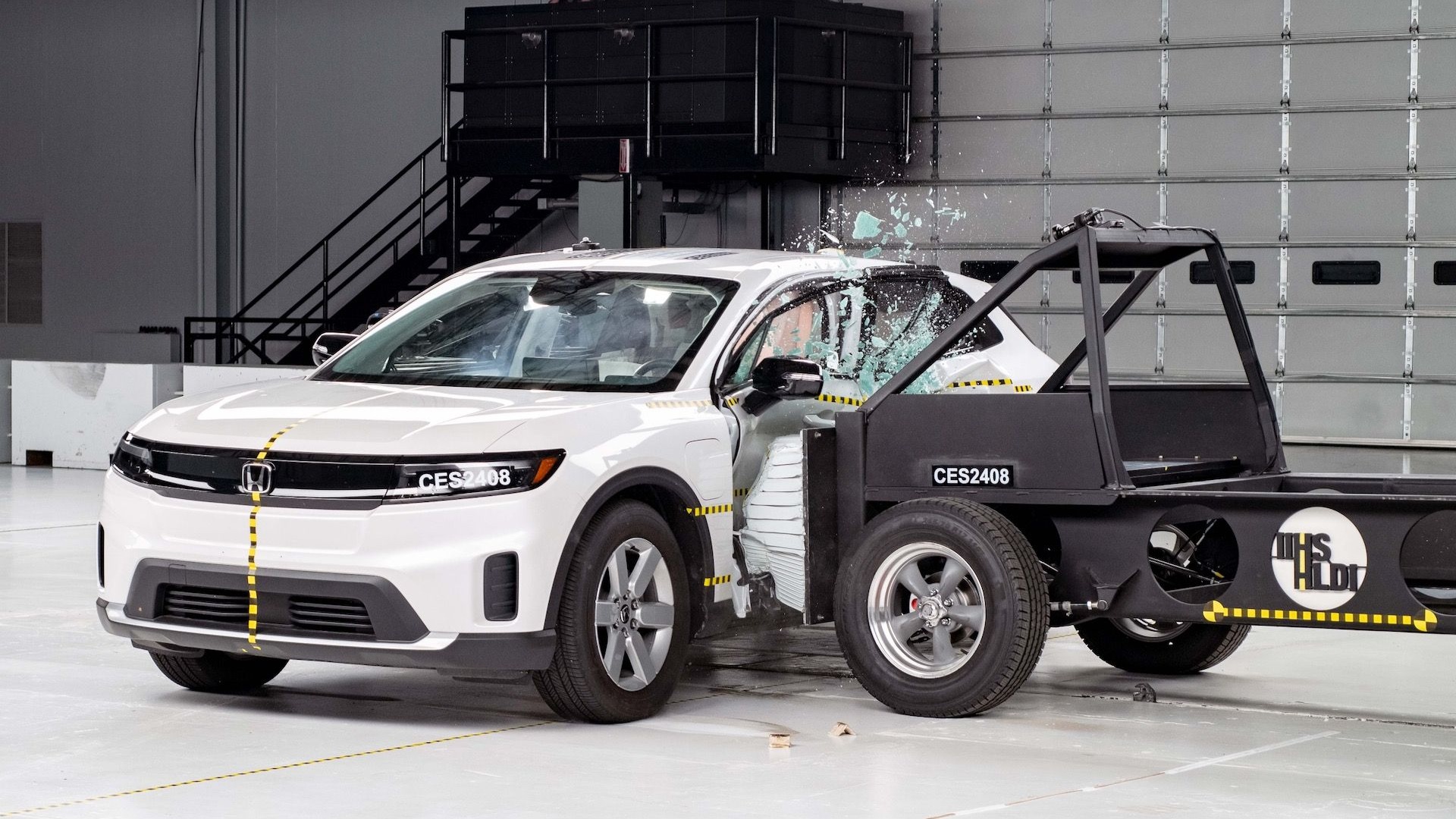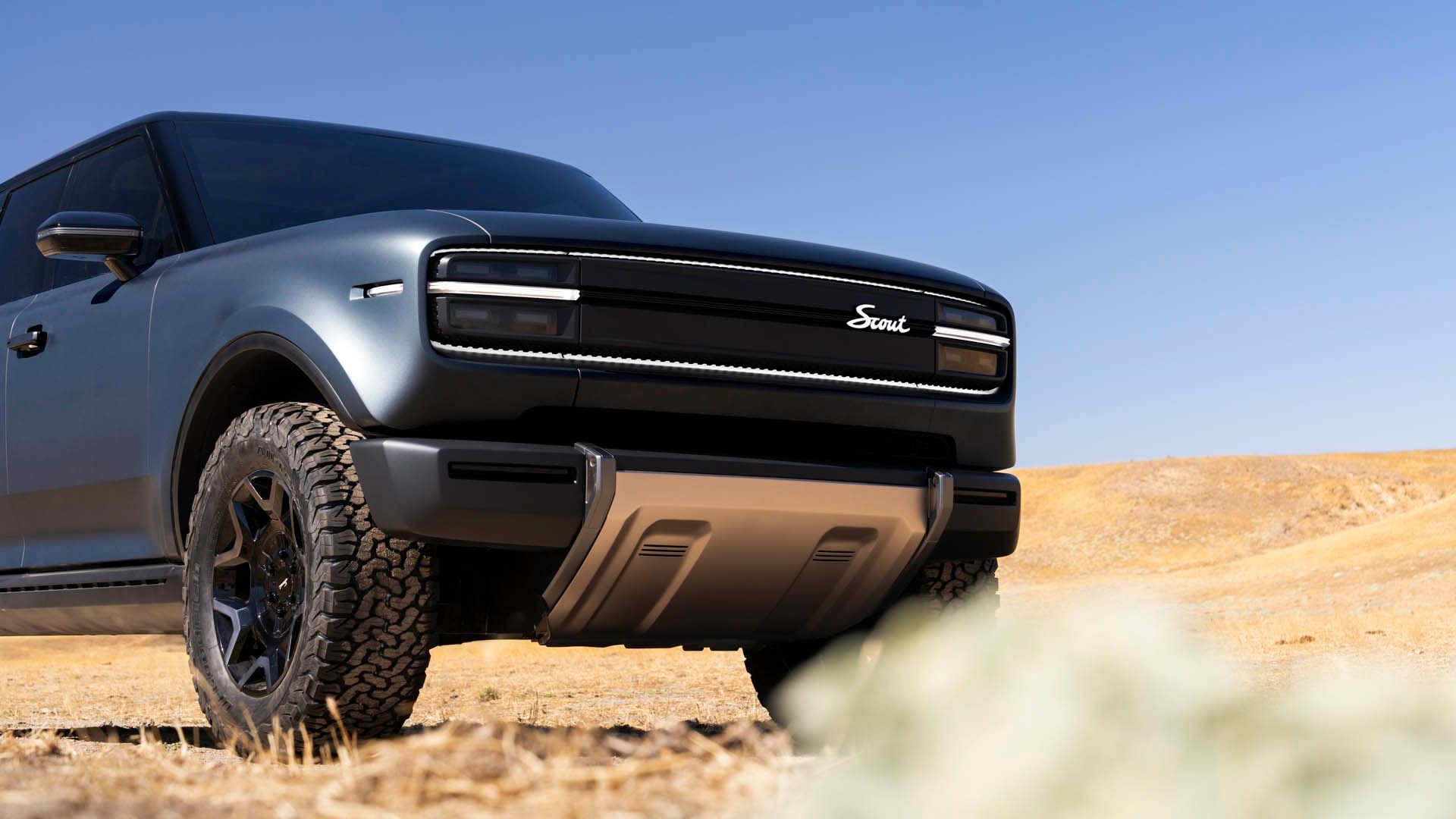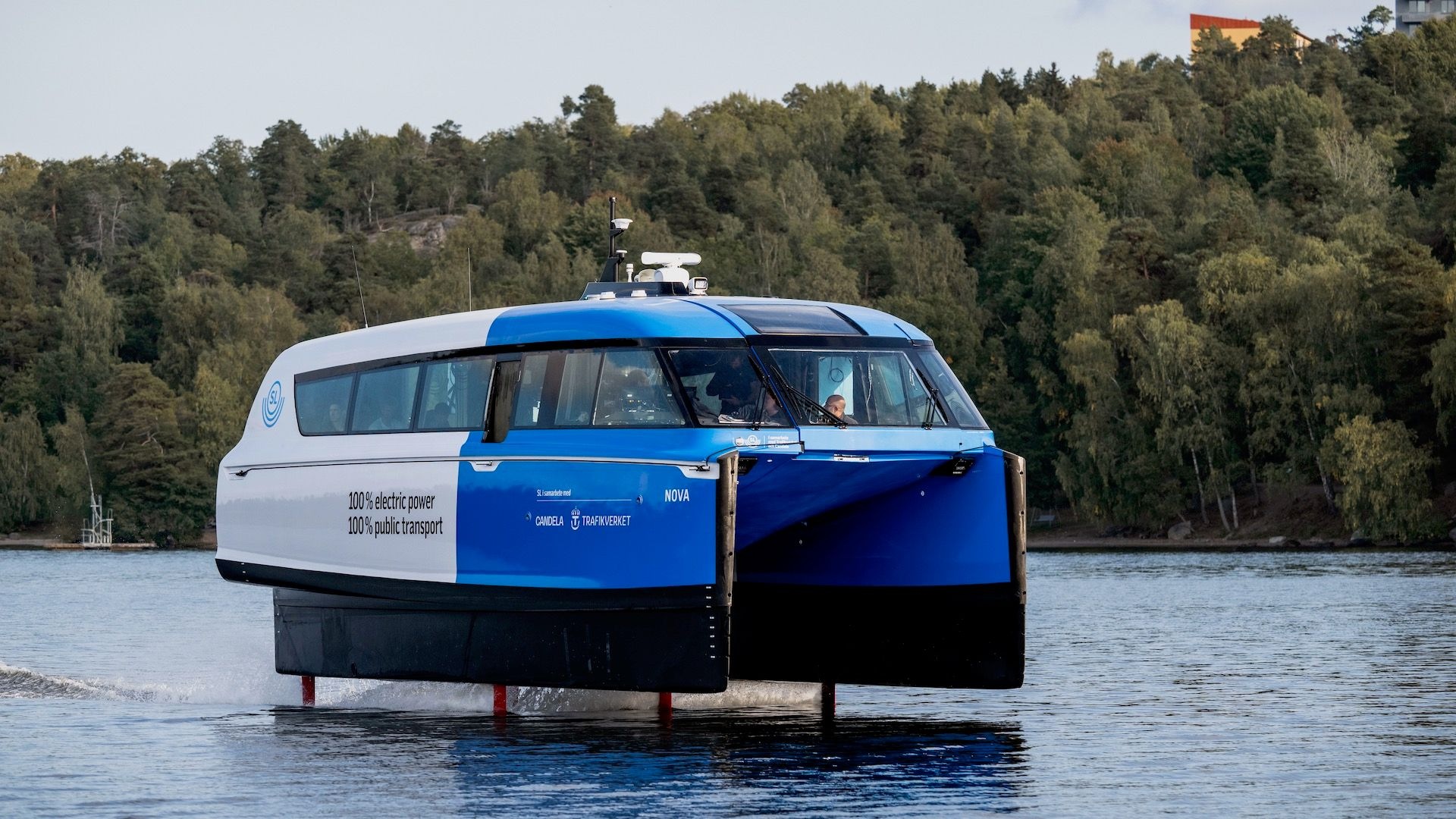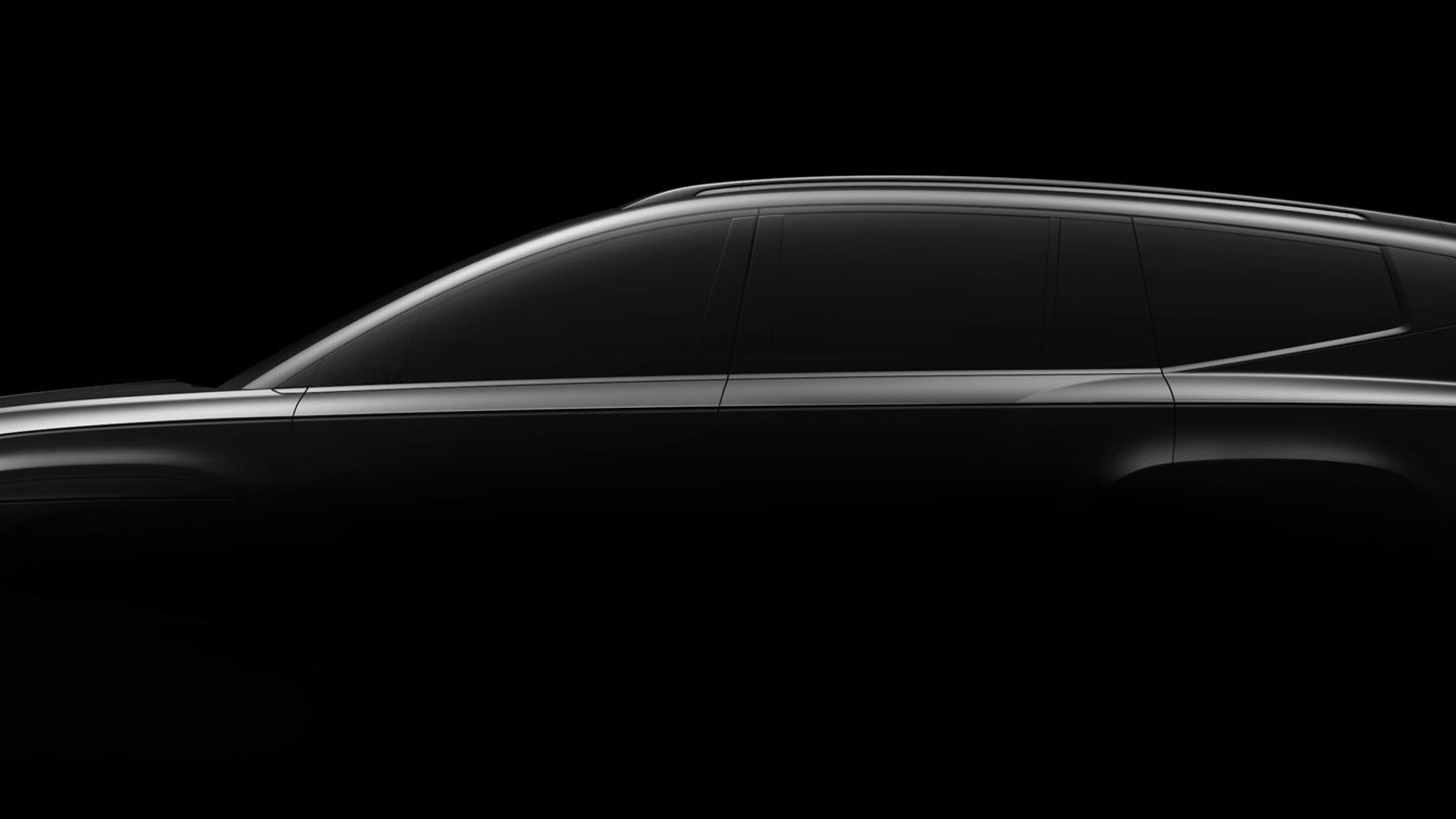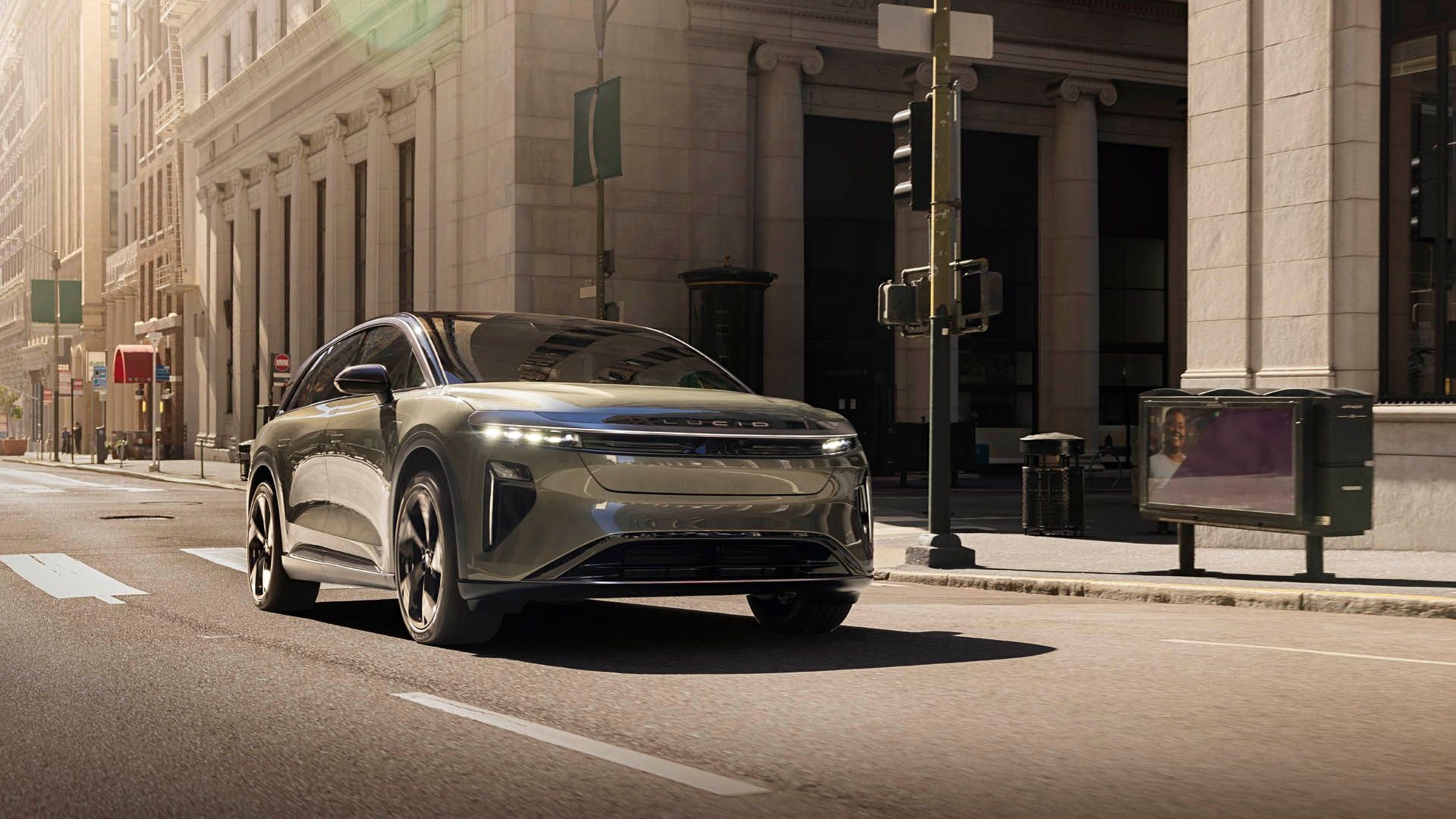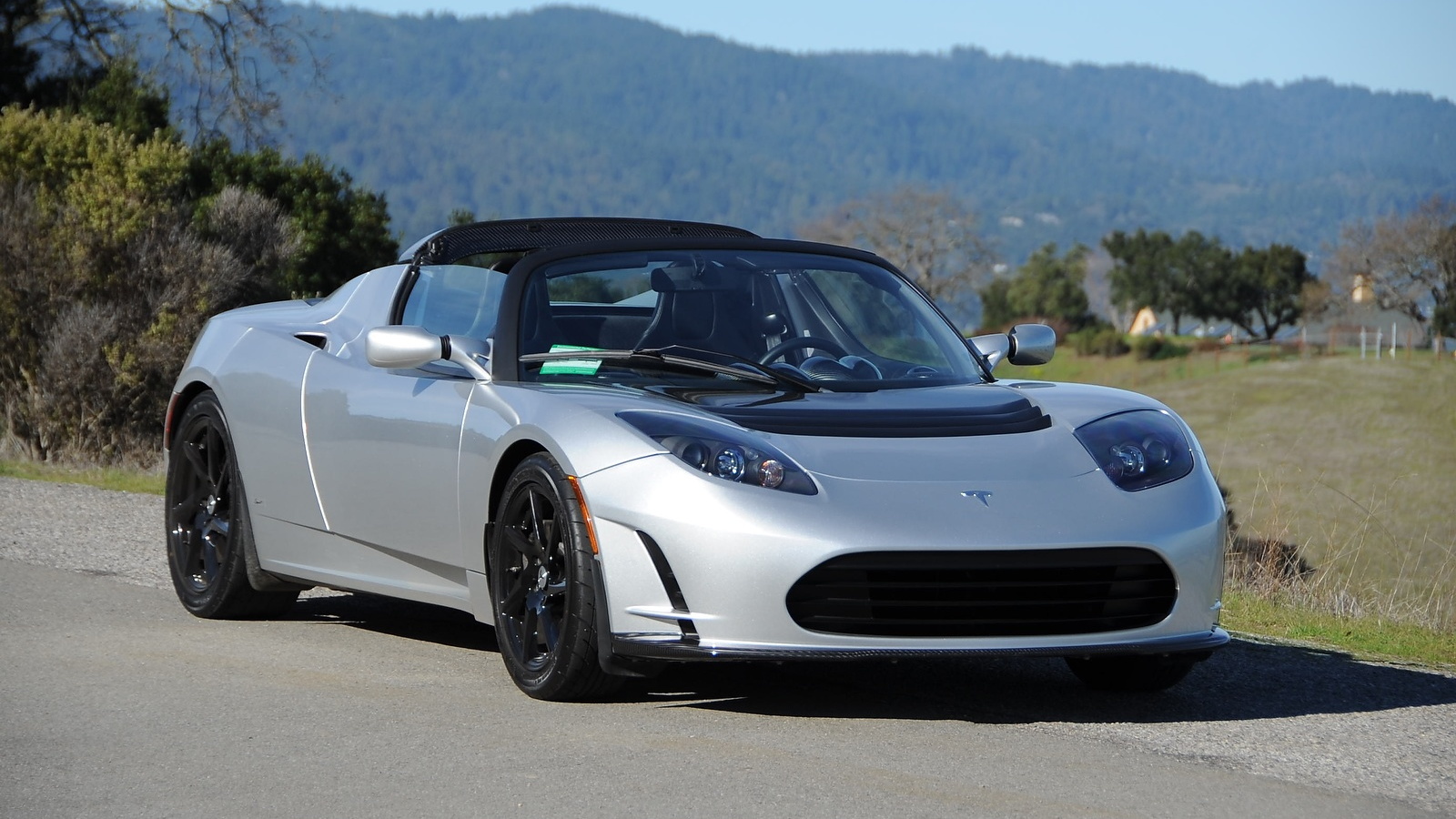By the numbers, the 2023 Hyundai Ioniq 6 electric sedan outpaces the Tesla Model 3, improves on the related Hyundai Ioniq 5, and matches the Lucid Air as the most efficient electric car on sale in the U.S. In the data age where we are ruled by algorithms, the favorable numeric data of the Ioniq 6 is impressive. Yet Hyundai’s latest sedan is more than just a number.
Its daring design elevates both form and function into something incalculably more. It just looks cool. There’s no number for that most subjective of takes. Yet its coolness serves the function of making it the most aerodynamic production car in the brand’s history. The curvaceous sedan’s super-low 0.22 coefficient of drag (0.21 in markets where it uses camera-based side mirrors) matches that of the Mercedes-Benz EQE sedan, which costs nearly twice as much.
It also goes farther on a single charge. The Ioniq 6’s aerodynamics translate in part to 361 miles of range, based on EPA estimates, and an efficiency rating of 4.2 miles per kwh for the SE Long Range rolling on 18-inch wheels. That matches the six-figure Lucid Air Touring AWD.
2023 Hyundai Ioniq 6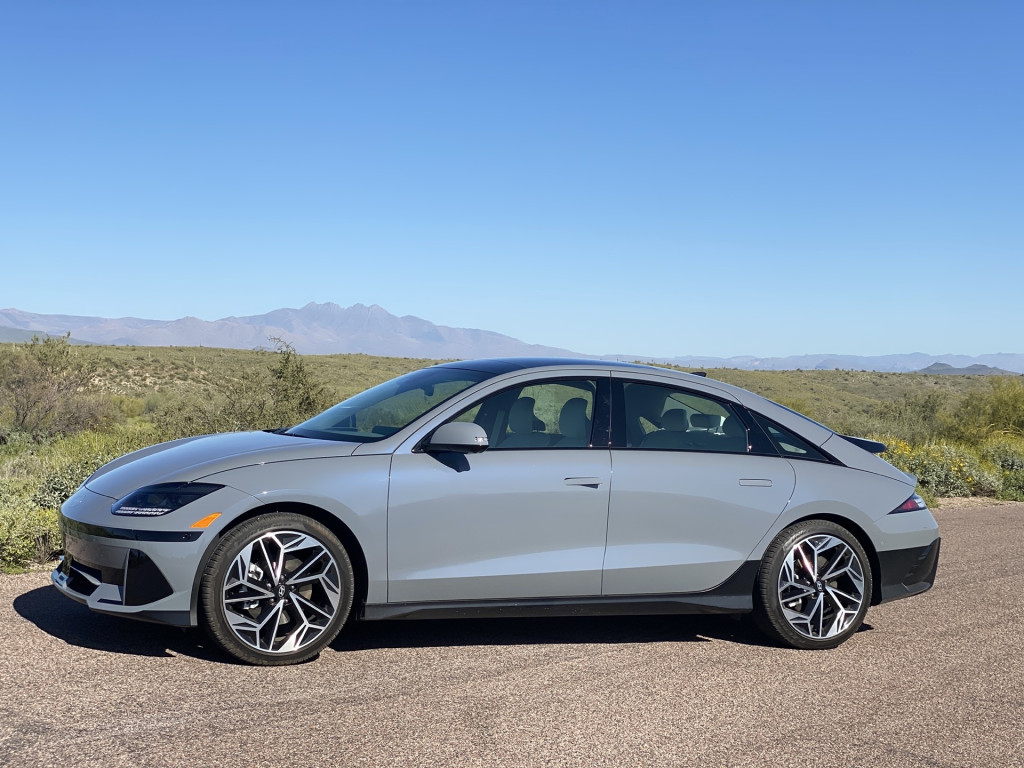
More relevant, it beats the Tesla Model 3 Long Range AWD with its 358-mile range and efficiency of 3.9 miles per kwh.
More impressive is how the Ioniq 6 does it. Not only does it look different than anything in the Hyundai and Genesis portfolio, it looks nothing like the homogenous crossover EV shape that has dominated the past couple years of EV introductions.
It shares its E-GMP underpinnings with the Ioniq 5 electric hatchback that, in its most efficient single-motor form, has a range of 303 miles and a rating of 3.3 miles per kwh. Aero matters.
The sedan stretches nearly nine inches longer than the Ioniq 5, yet its 116.1-inch wheelbase is 2.0 inches shorter. It also sits more than four inches lower and has a half-inch lower ground clearance. It uses the same 77.4-kwh battery pack and permanent magnet synchronous motors with either a rear-drive unit or a dual-motor setup for all-wheel drive. It weighs about 50 pounds less too, depending on trim and drivetrain choices. Later this summer, Hyundai will offer a base SE Standard Range with a 53-kwh battery pack and 240-mile range for $42,715.
Aerodynamic design of the Hyundai Ioniq 6
The Ioniq 6 carries automotive evolution on its curves, from the Saab 92 to the EQE and even a bit of the Porsche 911 Carrera and its ducktail spoiler.
Inspired by aircraft and modeled by the Prophecy concept that marked the end of the Ioniq hybrid and plug-in hybrid line for the fully electric Ioniq series, the Ioniq 6 wears a hood that dips down low. A flat front end with active air flaps doesn’t call to any brand design language or merely substitute a flat panel for a grille. In profile, it most channels the Prophecy with narrow gaps in wheel arches that house distinct 18-inch and 20-inch wheel designs.
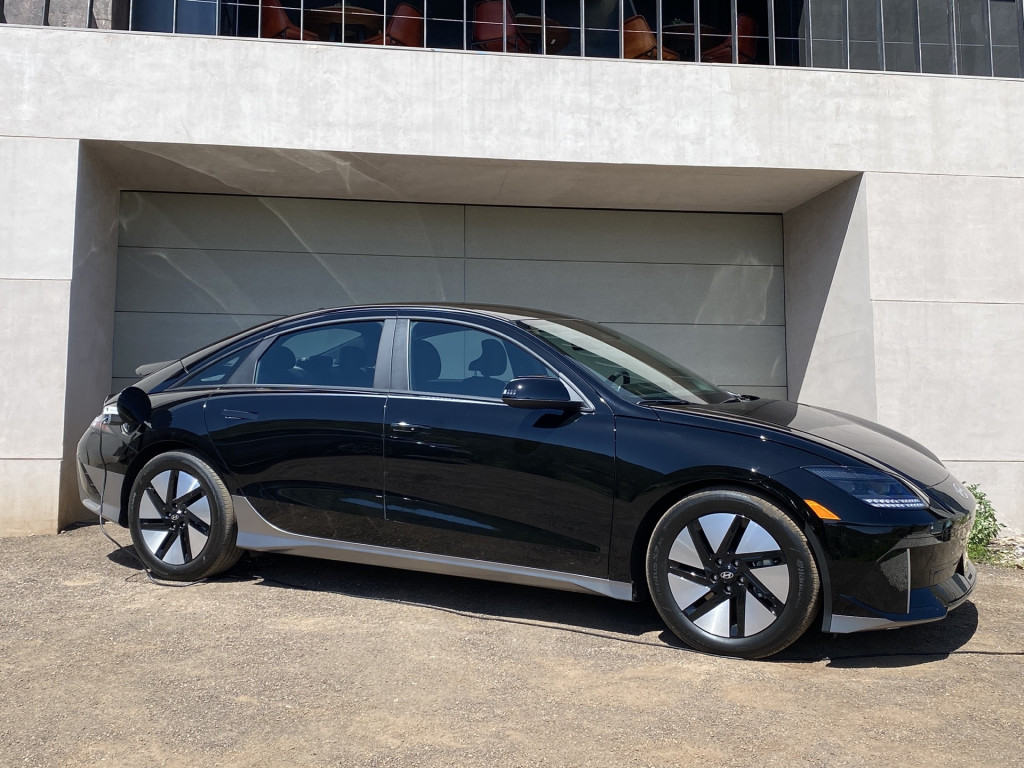
2023 Hyundai Ioniq 6
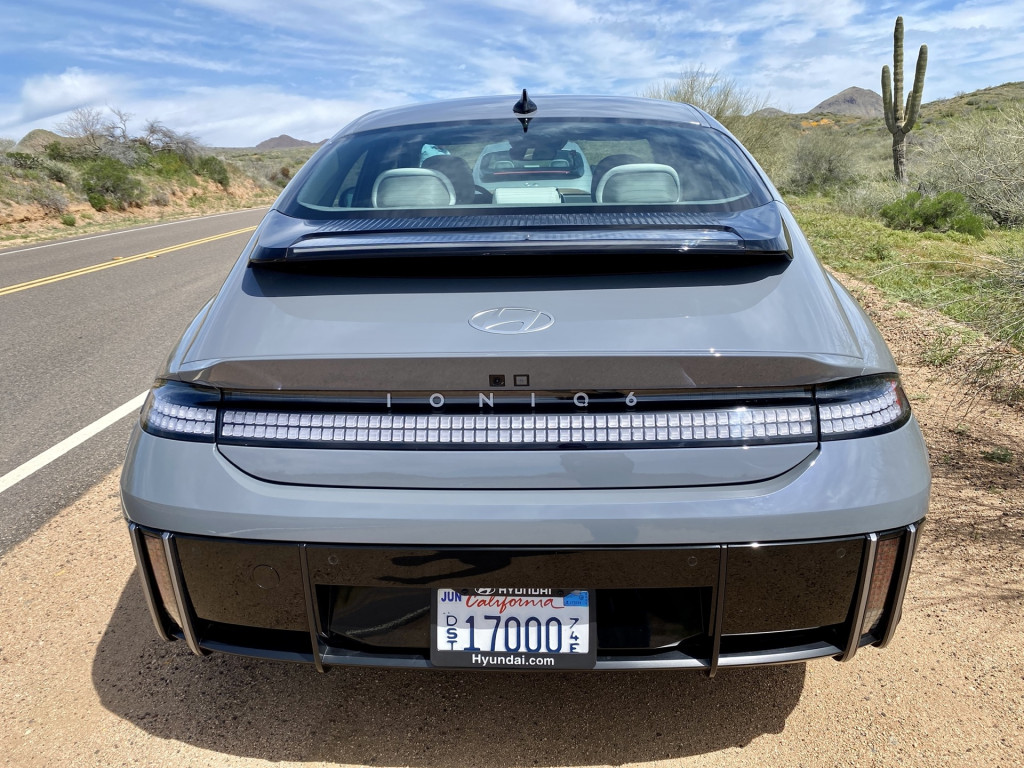
2023 Hyundai Ioniq 6

2023 Hyundai Ioniq 6
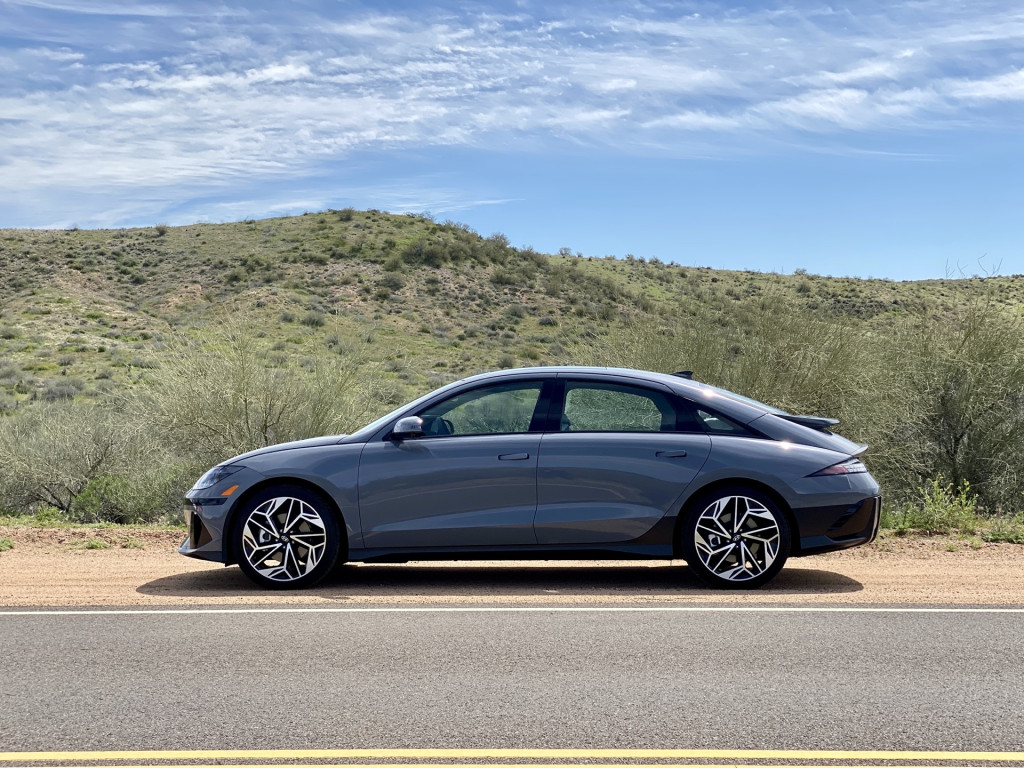
2023 Hyundai Ioniq 6
The round theme continues over the coupe-like roofline to the rear, where the Ioniq 6 splits the difference between a whale tail and ducktail with an elliptical spoiler and a winglet above it.
Stamping all these curves together are over 700 parametric pixels, according to Hyundai. These little squares turn the daytime running lights into mini ice cube trays. Same out back, on the vertical reverse lights. They compose the light bar spanning the rounded rear, the indicator lights on the side mirrors, the garnish in the standard LED headlight housing, and they’re stamped all over the interior—on the dash trim, the door panels, even the dead pedal and the wireless smartphone charger.
Hyundai’s design team is clearly putting the fun in functional with the Ioniq 6. Instead of the Hyundai logo on the steering wheel, there are four parametric pixels illuminated blue that temporarily switch colors based on the steering-wheel mounted drive mode switch, so Eco mode flashes green, and Sport mode flashes red. It’s also Morse code for the letter H.
Aside from the pixels, the Ioniq 6 has the same steering wheel as the Ioniq 5 with an offset drive mode button below the steering controls and a column-mounted gear shifter on the opposite side. The twin 12.3-inch cluster and infotainment screens curve toward the driver, as in the 5, but the similarities mostly end there.
How spacious is the Ioniq 6 interior?
It’s a roomy and open interior, but it lacks the airiness of electrics with flat fixed glass roofs. A panoramic sunroof can be optioned, but it eats up precious space in the back, where the Ioniq 6 conceals its biggest limitation due to aero. The roofline trims rear headroom enough so 6-foot passengers will need to slouch to fit. The rear seats have exceptional legroom of 39.2 inches, but toeroom can be tight with the front seats in their lowest position.
The tapered rear also cramps the trunk, which has a narrow opening and only 11.2 cubic feet of space. The 60/40-split rear seats fold flat, but for taller, bulkier items, the Ioniq 6 is forbidding. The frunk won’t help much either, with its 0.4 cubic feet of space holding a charge cord at best.
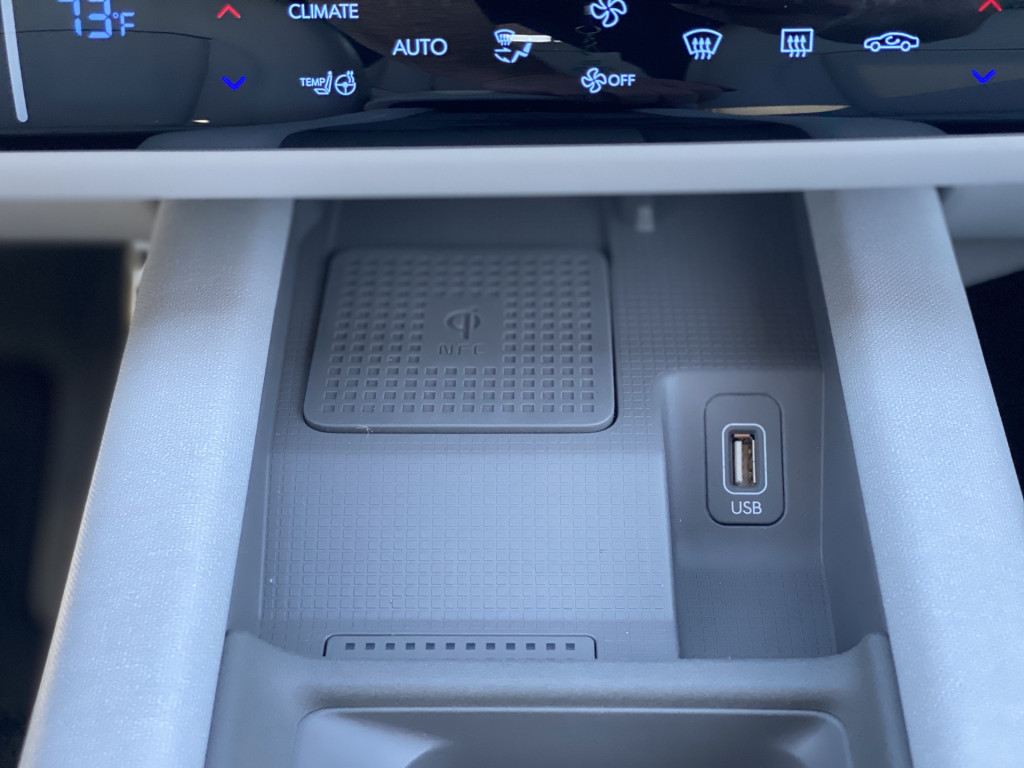
2023 Hyundai Ioniq 6
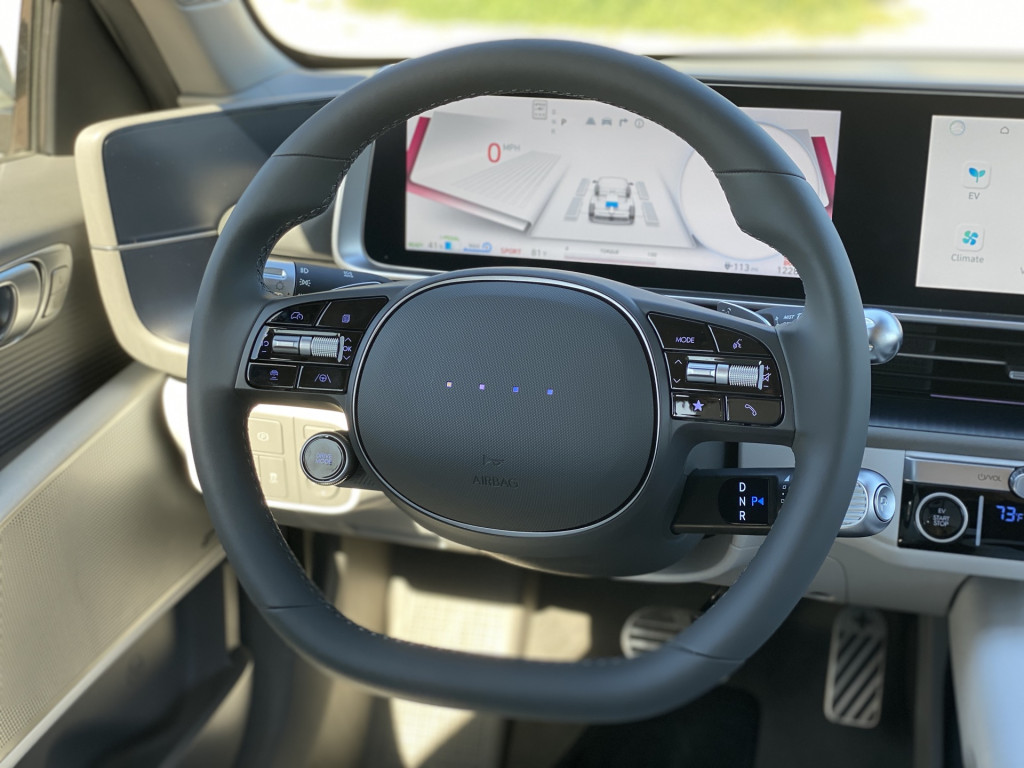
2023 Hyundai Ioniq 6
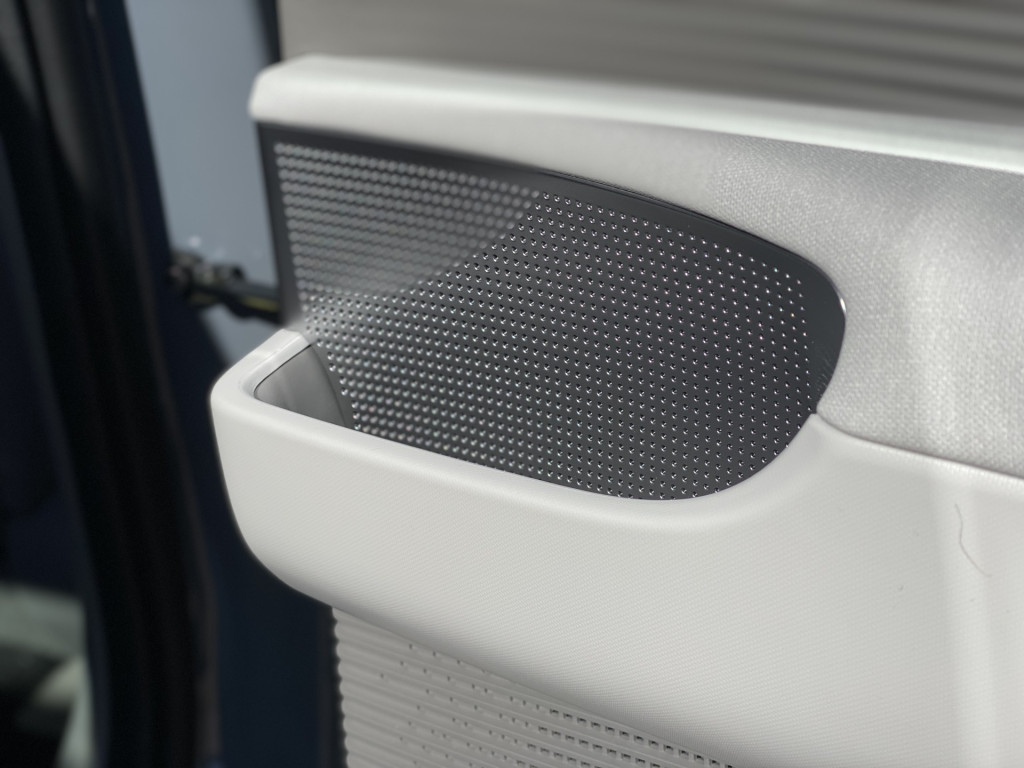
2023 Hyundai Ioniq 6
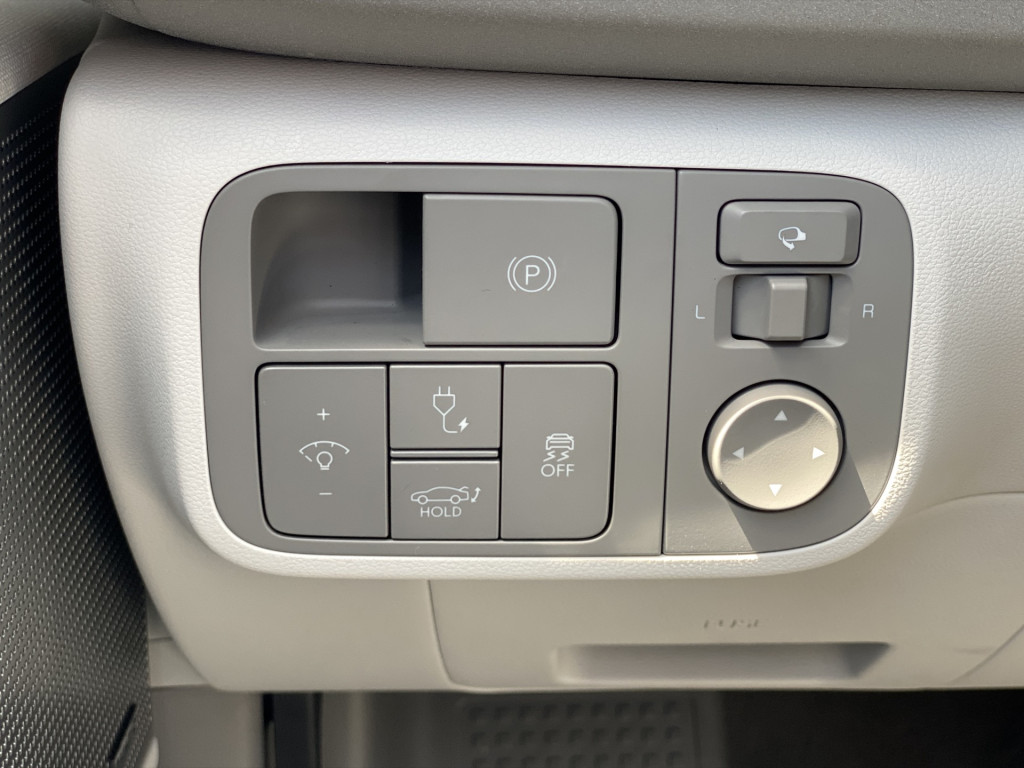
2023 Hyundai Ioniq 6
The doors lack any controls, with Hyundai instead putting the power door locks and windows on the center console bridge. A dash panel near the driver’s left knee houses side mirror controls, the traction control button, and the electronic parking brake. The bridge connects to the center stack, with a wireless phone charger and USB ports below the climate control panel, and a tray down low on the flat floor.
How does the 2023 Hyundai Ioniq 6 drive?
Behind the wheel it makes for a slightly sportier ride than the Ioniq 5, based on testing in a loaded Limited AWD model that tops the listing at $57,215, including destination. The dual-motor setup uses a 75-kw motor up front and a 165-kw motor at the rear that combine to make 320 hp and 446 lb-ft, same as in the Ioniq 5, except the 6 goes from 0-60 mph in 5.1 seconds. It doesn’t leap off the line like some other electrics, but there’s plenty of punch to sprint ahead of traffic and pass tourists and trailers on single-lane highways in the mountain-ringed desert outside of Scottsdale, Arizona, where we did our testing.
The 168-kw single-motor version makes 225 hp and 258 lb-ft of torque, and it posts a 7.4-second time to 60 mph. I had limited time in that model, with too much traffic to share an honest assessment.
Either model comes with an independent suspension with MacPherson struts up front and a multilink rear. Rubber bushings substitute for hydraulic ones in the Ioniq 5 to minimize road vibrations to give it a quietude that can’t be found in the Model 3. Frequency-sensitive shocks with greater oil flow are used for better responsiveness to speed and road conditions, but it’s also not as agile as a Model 3.

2023 Hyundai Ioniq 6
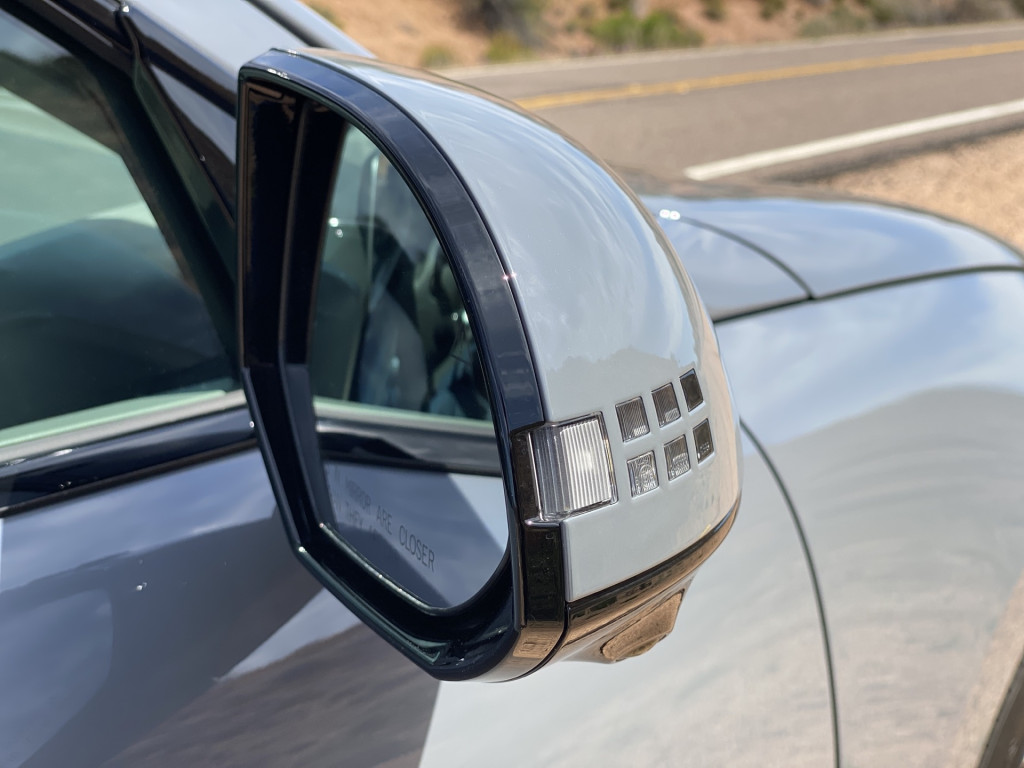
2023 Hyundai Ioniq 6

2023 Hyundai Ioniq 6
The grip on my test car’s Pirelli P Zero tires was never tested to the limit, but the sedan maintained its balance reasonably well. It leaned noticeably in turns, however, despite the lower sedan stance.
Five drive modes—Eco, Normal, Sport, Snow, and Custom—alter the torque distribution and steering input. Sport adjusts the steering feel from its default light feel to more resistance, and it automatically apportions torque between the axles for best traction based on inputs. In Eco mode, the front motor can disengage so parasitic drag is eliminated and range increased. Snow mode splits the torque evenly, acting like a locking center differential.
With an Ioniq 5 N model launching this summer, it’s reasonable to expect an Ioniq 6 N model that can ratchet up the performance with a lowered suspension, an electronic limited-slip rear differential, and a Drift mode.
For now, the Ioniq 6 is more spry than sporty, but it’s a calm, quiet car optimized for efficiency. Many electric vehicle owners will prize that more.
Ioniq 6 range and charging
The Ioniq 6 comes in well-equipped SE grades, or SEL and top Limited trims. Like the Ioniq 5, all Ioniq 6 models are built on an 800-volt architecture that enables 350-kw DC fast charging from 10-80% in 18 minutes, briefly reaching a peak rate of about 235 kw. With an 10.9-kw onboard charger, the Ioniq charges overnight at home on a 240-volt connector in about eight hours. A heat pump and battery heating system come standard to help reach peak charge rates quicker in cold climates. Top Limited models come with a vehicle-to-load (V2L) feature that can output 1.9 kw for 120-volt charging of appliances, tools, camping gear, or to slow charge another EV.
2023 Hyundai Ioniq 6
The Ioniq 6 comes with four regenerative braking settings via steering paddles, including a one-pedal driving mode that requires some modulation on the throttle to avoid abrupt grabbiness. Over nearly 100 desert miles without the HVAC on, the Ioniq 6 Limited with 20-inch wheels outpaced its EPA estimate of 3.1 miles per kwh, for an average of about 3.4 miles per kwh, based on the trip computer. Even with the lowest range of Ioniq 6 variants, the 270-mile estimate never left me with range anxiety, even as I neared 200 miles at the day’s end.
As in any car, wheel and tire sizes make a big difference. The SE AWD with 18-inch wheels and less content has a 316-mile range and a rated EPA combined efficiency of 3.6 mi/kwh.
The SEL and Limited RWD models have a range of 305 miles and 3.5 miles per kwh.
Ioniq 6 makes a difference
Throughout my time with the Ioniq 6, I wondered why an EV intender would choose this sedan over the more practical Hyundai Ioniq 5 or the sportier, more tech-forward bestseller known as the Tesla Model 3.
The extra three miles of range is a marketing point more than a selling point, but the efficiency, which doesn’t get as much attention as gas mileage in the EV space, is undeniable.

2023 Hyundai Ioniq 6
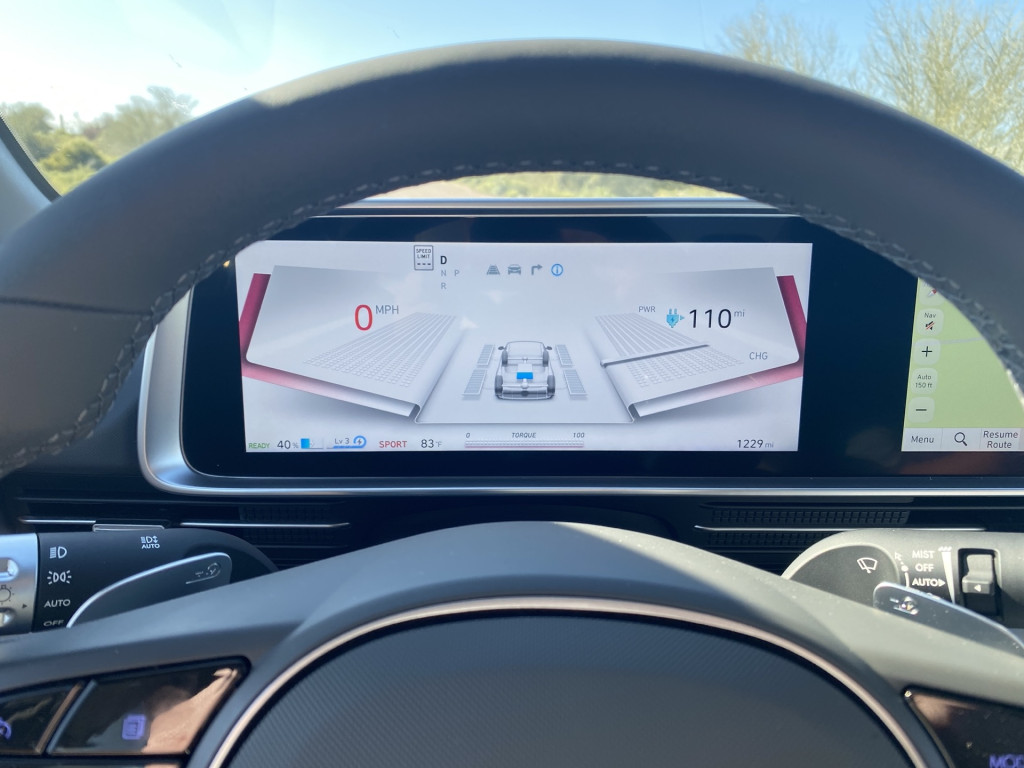
2023 Hyundai Ioniq 6
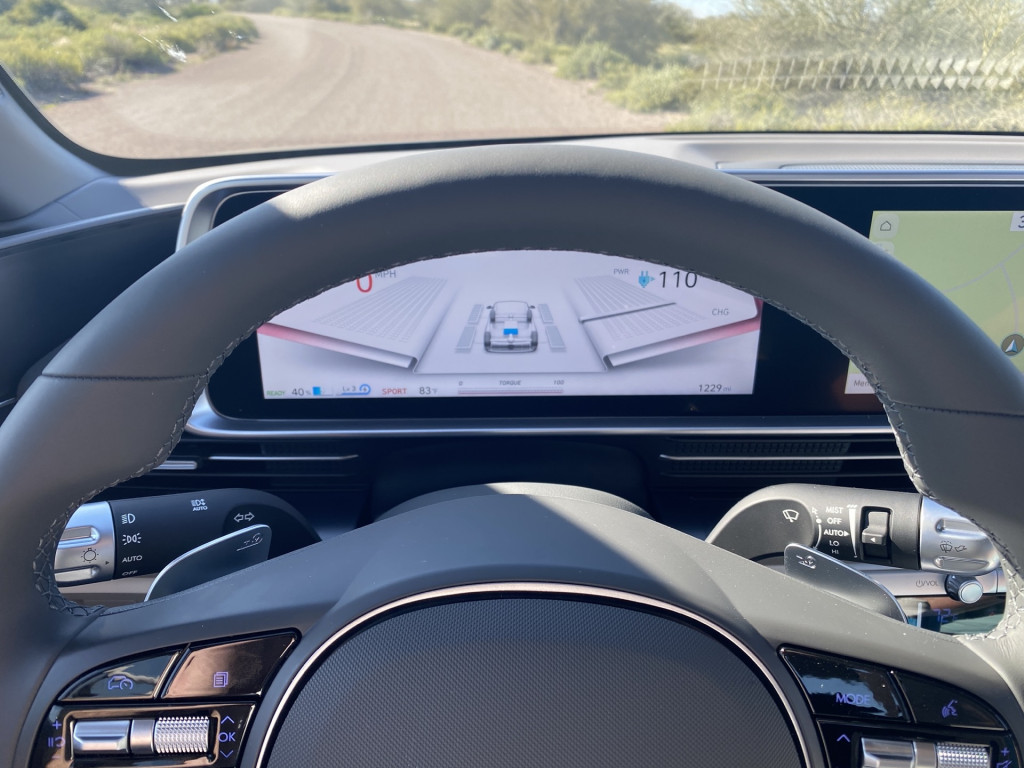
2023 Hyundai Ioniq 6
Moreover, the Ioniq 6 is a loaded value, even if it doesn’t qualify for the latest iteration of the $7,500 federal EV tax credit. It comes with standard driver-assist tech such as automatic emergency braking, blind-spot monitors, active lane control, and adaptive cruise control down to a stop. New front and rear corner radar sensors, as well as new camera hardware, make the driver-assist tech more comprehensive in detecting cyclists, pedestrians, and turning cars. In addition to the 12.3-inch screens (that still requires a wired smartphone connection), standard equipment includes heated front seats, a power driver seat, five USB ports, and an updated Digital Key smartphone controller that no longer requires a subscription.
All of these things are compelling. But the most compelling attribute of the Ioniq 6 is that it looks different, and not just to look different. It won’t be for everyone, but the marriage of form and function elevates it.
Hyundai paid for lodging and airfare for Green Car Reports to present this firsthand report.
